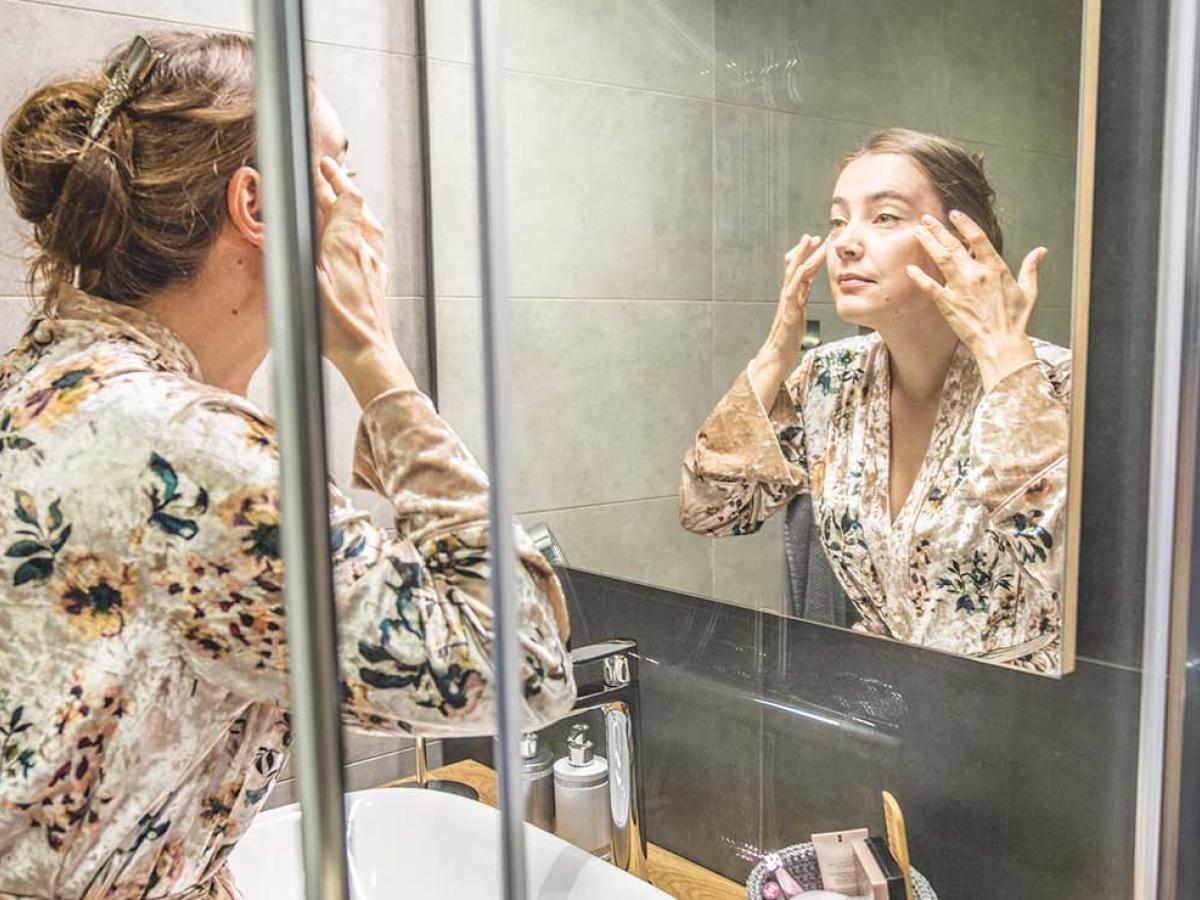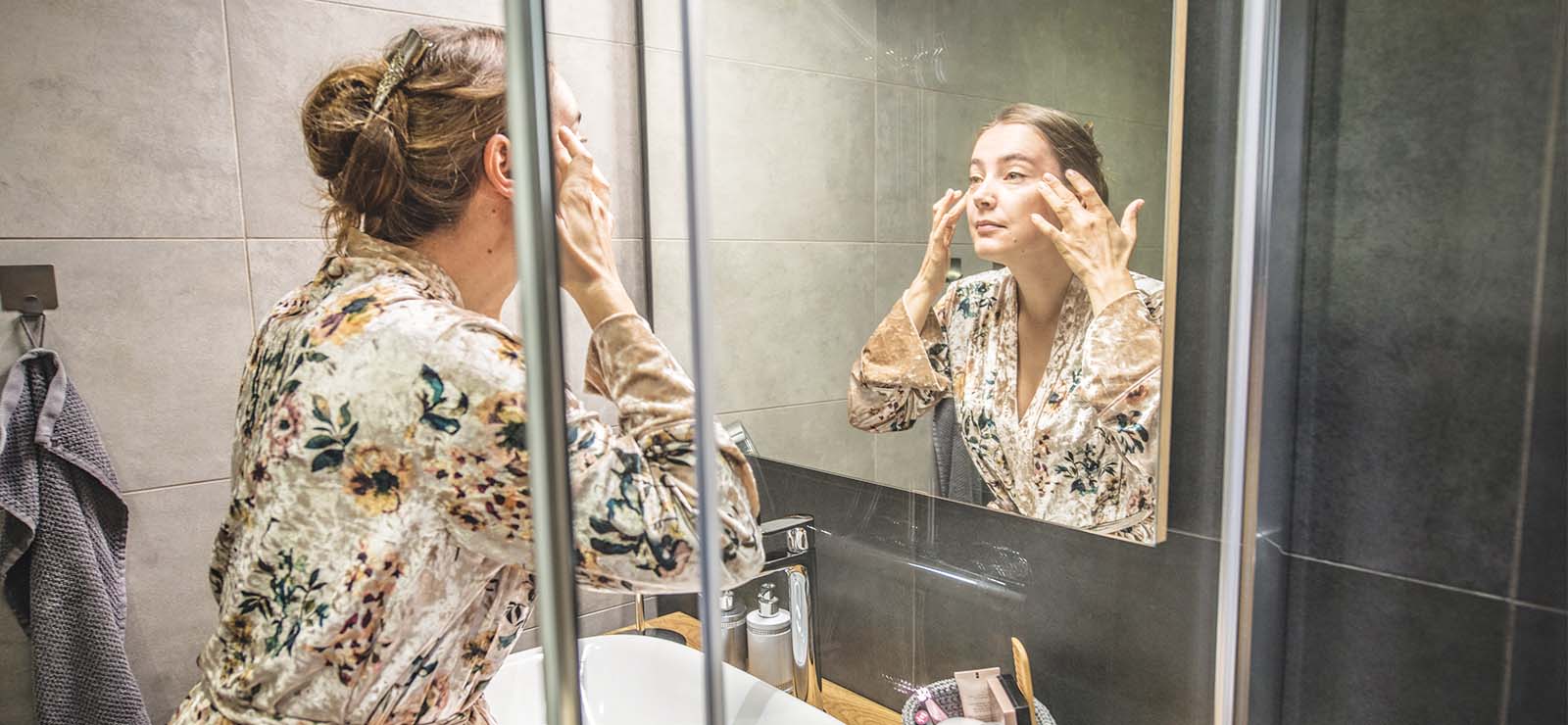June 21, 2022

Remember when you were a teen and thought unpredictable skin was just a phase you'd grow out of? Unfortunately, that was wishful thinking for a lot of us. Many women in their 30s, 40s and 50s find their skin is changing — often due to life events, environmental factors or just plain aging.

Changes to our skin are normal, says Dr. Ashley Jenkins, a dermatologist with MU Health Care. To keep skin healthy, we have to change with it. "Skincare doesn't have to be complicated or expensive or time-consuming," she says. "But the right routine will keep your skin feeling its best and may prevent undue stress and aging to your skin."
To understand and troubleshoot changes to your skin, take these steps:
Learn Your Skin Type
There is no one-size-fits-all approach to skin care — especially if your skin is changing. But knowing your skin type will help you pinpoint the products you actually need, saving you time, money and valuable real estate in your bathroom.
There are three skin types, based on how much natural oil your skin produces:
- Dry: Skin that doesn't produce enough oil may be prone to cracking, rough patches or flaking. Dry skin usually feels tight without moisturizer, and makeup tends to settle into the fine lines of the face by the end of the day.
- Oily: Skin producing too much oil often has larger pores. You may notice a visible shine as the day goes on and your makeup may feel like it doesn't stay put.
- Combination: People with combination skin usually have dry skin only in some areas like the cheeks. Other areas, such as the forehead, nose and chin (called the "T-zone") tend to be oily.
Your skin type is usually based on genetics (thanks mom and dad) and should remain somewhat stable over time. But like most other things in life, hormone levels, stress, diet or medication can affect it. If you notice a change in the amount of oil your skin produces, you'll want to choose products specifically made to complement those changes.
Adopt a Basic and Consistent Skincare Routine
The most effective skincare routine is the one you'll keep up with. Dr. Jenkins suggests keeping it simple with just three steps, using products designed for your skin type:
- Cleanse both morning and night to remove unwanted oil, dirt, bacteria, dead skin cells and makeup.
- Moisturize both morning and night to give the skin the water and oil it needs to stay smooth and healthy.
- Protect each morning with sunscreen (SPF30) and possibly an antioxidant, like vitamin C or vitamin E, to protect your skin from environmental damage.
When starting a new skin care routine, there are many benefits to keeping it simple at first. A basic skin care routine, according to Dr. Jenkins, doesn't have to include serums (products that deliver a high concentration of active ingredients) or exfoliants (chemical or grainy substances used to remove dead skin cells). They can contain "active" ingredients, which can sometimes cause more harm than good to your skin.
Get Help for Ongoing Skin Conditions
Unlike skin type, the condition of your skin tends to change over time. In fact, skin conditions are pretty common — at any given time, one out of every three Americans has one.
The good news is you can manage most conditions with the right skin care routine. Common skin conditions include:
- Acne vulgaris: Acne (also called pimples or zits) occurs when hair follicles are clogged with oil and dead skin cells. Acne can appear as white pimples (whiteheads), dark pimples (blackheads), pink bumps (papules) or pus-filled lesions (pustules or cystic acne).
- Dehydration: Dehydrated skin doesn't have enough water content, often due to dry air, over-exfoliation, excessive sun exposure or harsh products. If you pinch a centimeter of your skin and get wrinkles, you may have dehydrated skin.
- Rosacea: Like acne, this condition causes redness and small bumps on the face. Triggers can include weather, harsh products, stress, menopause or certain foods and alcohol.
- Sensitivity: Sensitive skin reacts easily to certain products or conditions with a rash, itching or burning sensation. Sensitive skin may also show up as acne or rosacea.
- Photoaging: Skin that experiences photoaging often appears as though it has aged much quicker than would be expected given a person's actual age. You may notice fine lines and wrinkles as well as deeper crevices, a bumpy texture, a yellow or uneven skin tone and hyperpigmentation (patches of darker skin).
Before you buy every over-the-counter product promising to cure your skin issue, check in with a dermatologist. They can guide treatment for skin conditions safely and effectively. For extreme cases, your doctor may recommend prescription-strength medication.
Recognize (and Reverse) the Signs of Sun Damage and Aging
Ultraviolet (UV) light (from the sun or a tanning bed) is the number one cause of skin aging — responsible for 90% of visible skin changes. Too much UV light can cause wrinkles, loose skin, age spots or a blotchy complexion.
If the signs of aging make you cringe or you made some bad choices in your youth (weekly trips to the tanning salon or using oil instead of sunscreen), it's not too late. Retinol, which encourages cell turnover and increases collagen production, can reduce wrinkles and help even out skin color, tone and texture. Dermatologists also offer in-office procedures to help to smooth wrinkles, tighten skin and improve your skin's overall complexion.
Adapt to Skin Changes After a Life Event
Your skin reacts to what's going on both outside and inside your body, so certain life events may impact your skin. Pregnancy and menopause involve hormonal changes that can cause conditions such as acne or dehydration. Some people also notice their skin changing after cancer treatments like chemotherapy.
If you've gone through a life event and your skin changes last more than two months, you may need to change your skincare routine. Dr. Jenkins recommends going back to the basics: evaluate your skin, adopt a simple routine based on skin type and get help for any new conditions.
Next Steps and Useful Resources
- Need to speak with a dermatologist? Find one today


